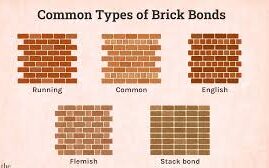Introduction:
Masonry, an ancient building technique, has withstood the test of time due to its durability, versatility, and aesthetic appeal. Central to the art of masonry are the various joint types employed in creating structures that endure for generations. From simple yet effective joints to intricate designs that enhance architectural beauty, the choice of masonry joint plays a crucial role in the overall structure. In this article, we delve into the world of masonry joint types, exploring their characteristics, applications, and the craftsmanship involved in their execution.
Butt Joint:
The simplest of masonry joints, the butt joint involves placing bricks or stones end to end without any overlapping. While it lacks the structural strength of more complex joints, it is often used for decorative purposes, providing a clean and minimalist appearance.
Concave Joint:
Characterized by a concave groove, the concave joint not only adds a decorative element but also helps to shed water, preventing moisture penetration. This joint type commonly employed in areas with a high risk of water exposure, such as exterior walls or foundations.
Vee Joint:
The Vee joint, as the name suggests, features a V-shaped groove between bricks or stones. This joint type adds a dynamic visual element to the masonry work and often chosen for its ability to highlight the individual units in the structure.
Weathered Joint:
Designed to deflect water away from the structure, the weathered joint features a sloping profile. This type of joint is frequently use in exposed areas or on the exterior of buildings where weather resistance is essential.
Flush Joint: Offering a smooth, seamless appearance, the flush joint aligns the bricks or stones precisely, creating a flat surface. This joint type is popular in modern architecture, contributing to a sleek and contemporary aesthetic.
Struck Joint:
The struck joint involves compressing the mortar between bricks or stones, leaving a slightly recessed, textured finish. This joint type adds a rustic charm to the masonry and is often favored for traditional or historical structures.
Raked Joint:
In contrast to the struck joint, the raked joint exposes the aggregates in the mortar, creating a textured, rough-hewn appearance. This joint type is frequently used for projects that aim to evoke a sense of authenticity and age.
Beaded Joint:
Adding a touch of refinement, the beaded joint features a rounded or beaded profile. This decorative joint type is commonly employed in architectural elements such as arches or columns, enhancing the overall visual appeal of the masonry work.
Conclusion:
Masonry joint types are not merely functional elements but integral components of architectural design. The selection of a specific joint type depends on factors such as structural requirements, aesthetic preferences, and environmental considerations. As craftsmen continue to push the boundaries of masonry, experimenting with innovative joint designs. The timeless art of building with bricks and stones evolves, blending tradition with modernity. Understanding the nuances of masonry joint types is essential for architects, builders, and enthusiasts alike. As it unlocks the potential to create structures that stand as testaments to both strength and beauty.

